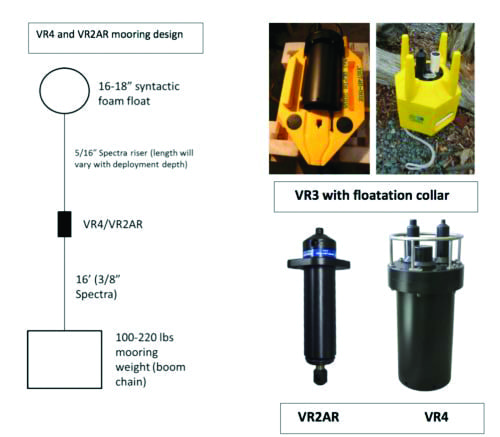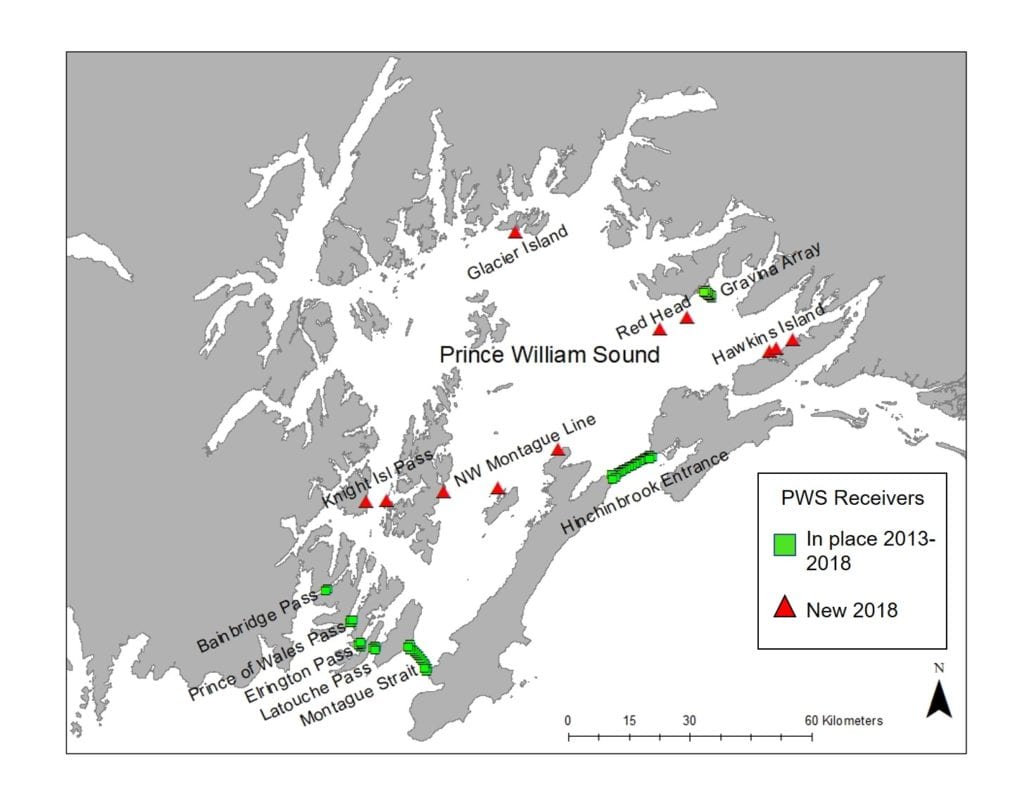By Arissa Pearson
For The Cordova Times
Implanting Prince William Sound fish with acoustic tags has opened up a new realm of possibilities for determining how long individual fish remain in an area, the timing and direction of their movements, and connectivity between fish stocks.
Beginning in 2013, the Prince William Sound Science Center, in collaboration with Canada’s Ocean Tracking Network, and the Exxon Valdez Oil Spill Trustee Council, installed a series of underwater hydrophones throughout Prince William Sound. When a tagged fish swims within the detection range of the hydrophone, the receiver records the individual identification code, and a time and date stamp for that fish.

Currently there are around 65 acoustic receivers deployed in the Sound. Most of these receivers are located in “curtains” that span the major entrances between the Gulf of Alaska and Prince William Sound. These include Hinchinbrook Entrance, southern Montague Straight and the four Southwest Passages: Bainbridge, Prince of Wales, Elrington and LaTouche. These hydrophone arrays are the only series of arrays in Alaska and are providing us with new information on fish species ranging from salmon sharks to Pacific herring.
Dr. Mary Anne Bishop and her crew from the science center have tagged 160 Pacific herring over the last two years.

Bishop’s research is showing that some adult herring spend the whole year in Prince William Sound, while some of the older, larger herring move out of Prince William Sound after spawning and spend weeks to months in the Gulf of Alaska before returning.
Bishop encourages fishers to avoid fishing in and around the arrays. You can find their exact locations on the NOAA electronic charts or online. If you by chance catch a buoy and its attached hydrophone, reel it in and bring it to the Science Center. Please do not cut the line as the hydrophone and its data will be lost forever.





